Last Chance to Catch NYC's Holiday Notalgia Train
We met the voices of the NYC subway on our nostalgia ride this weekend!



Aerial photo of Brooklyn Navy Yard. Photo courtesy Brooklyn Navy Yard Development Corporation.
During the height of its industrial growth, the Brooklyn Navy Yard, also known as The United States Navy Yard and the New York Naval Shipyard (NYNS), covered over 200 acres and employed 70,000 workers during World War II. As one of the nation’s “most storied naval shipbuilding facilities,” the shipyard once produced famous battle ships, including the USS Maine and the USS Arizona. While it no longer welcomes huge marine battle vessels, the industrial yard remains a bustling working center. Today, it’s home to over 330 businesses, helping to generate over $2 billion in annual revenue for the city per year.

As the website of Rooftop Reds notes, the Brooklyn Navy Yard isn’t typically the first place that comes to mind when someone thinks of viticulture. Yet, it’s home to the “world’s first commercially viable rooftop vineyard in New York City.” The 14,800-square-feet space utilizes a unique urban planter system (the first of its kind) developed with the help of Cornell University and Finger Lake industry leaders.
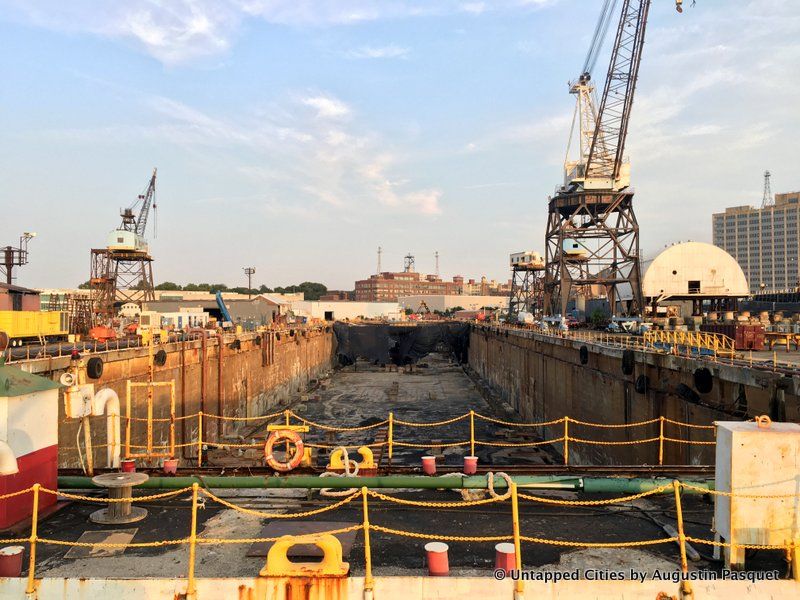
American poet Walt Whitman once lived in Wallabout, a Brooklyn neighborhood located next to the navy yard. In fact, he would have been very familiar with the site, as it employed many of the residents from the surrounding neighborhoods and served as an area for social gatherings and events. Today, it’s one of the oldest areas of the borough, decorated with a mix of town homes, warehouses and the largest concentration of pre-Civil War wood-framed houses in the city. According to “Brooklyn’s Historic Clinton Hill and Wallabout” by Brian Merlis, it’s also where Walt Whitman completed “Leaves of Grass” (on 99 Ryerson Street to be specific).
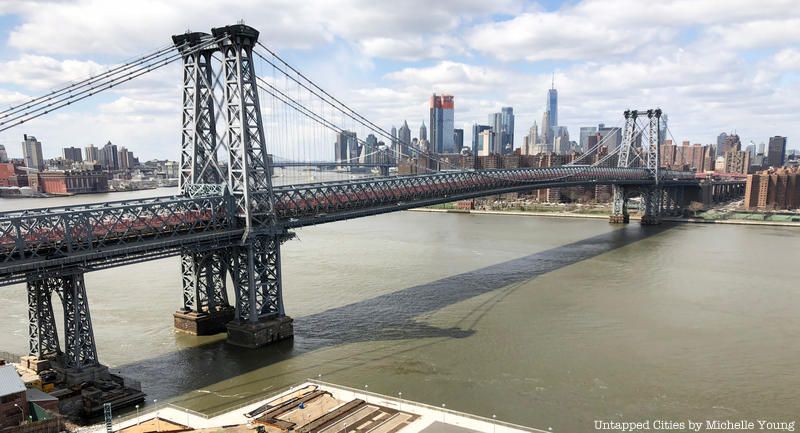
For nearly two centuries, the Brooklyn Navy Yard was the center of American naval shipbuilding. During the Civil War, it employed 6,000 men, and by the “Acme Years of World War II,” it operated around the clock, powered by a workforce of 70,000 tireless laborers. The work was so vital to the war effort that the pedestrian crossings of the Williamsburg and Manhattan Bridges, which provided clear aerial views of the navy yard, had to be covered in order to prevent espionage.

Photo from Wikimedia Commons
Standing out amongst a number of other ships built at the Brooklyn Navy Yard, the USS Connecticut is noteworthy because it served as President Theodore Roosevelt’s flagship for the Great White Fleet. To showcase the U.S. Navy’s powerful fleet and to assert the country as a global power, 26 vessels embarked on a two-year journey, which circumnavigated the globe. It took off on December 16, 1907 and sailed until February 22, 1909.
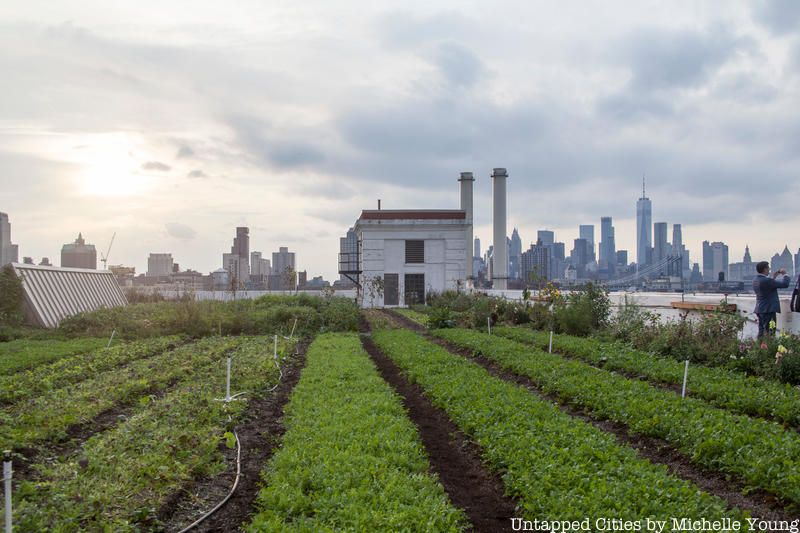
The Brooklyn Grange, a rooftop farming business, established its second farm atop Building no. 3 at the Brooklyn Navy Yard. The 65,000-square-feet space, which overlooks the East River, is home to an apiary (Brooklyn Grange Bees, AKA BGBees) that produces pounds of honey each year. In addition to the product, it also provides a bee-training program, which meets onsite twice a month.
See more surprising apiary locations throughout NYC here.

Aerial photo of Brooklyn Navy Yard. Photo courtesy Brooklyn Navy Yard Development Corporation.
As we pointed out in another post, the Brooklyn Navy Yard functions very much like a micro city. Managed by the not-for-profit corporation Brooklyn Navy Yard Development Corporation (BNYDC), the walled-in property has its own street system, street sign design, parking rules and snow removal/sanitation services. There’s even a shuttle that brings people from the subway to the Navy Yard and between buildings.
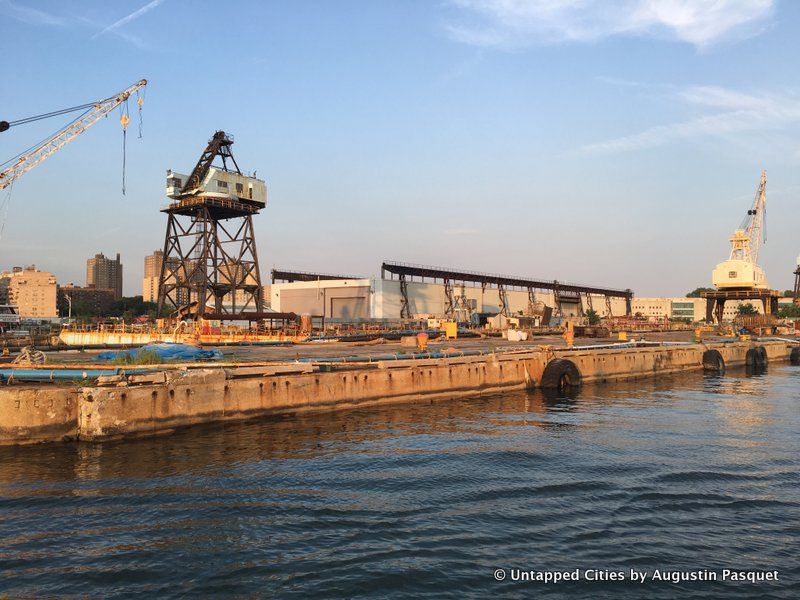
The Brooklyn Navy Yard has historically relied on an extensive workforce, particularly during periods of war time. The Brooklyn Naval Hospital, which was active during the Civil War, employed some of the first female nurses and medical students in the United States Navy. Moreover, when the workforce exploded in size to 70,000 employees during World War II, women were hired at the yard for the first time as mechanics and technicians.
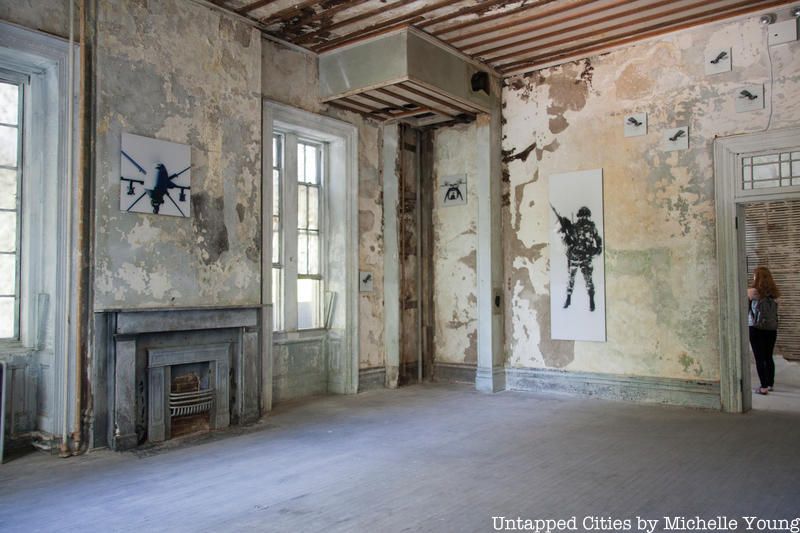 Inside the Brooklyn Navy Yard abandoned hospitals
Inside the Brooklyn Navy Yard abandoned hospitals
The Brooklyn Navy Yard Naval Hospital (or the Naval Annex), once one of the oldest naval hospitals in the U.S., was built from 1830 to 1838, and decommissioned in the 1970s. It was at this site that naval surgeon DR. E.R. Squibb developed the first aesthetic ethers for use in surgery. He would later go on to establish his own pharmaceutical company outside the Yard in 1857, which provided medical supplies for the Union Army during the Civil War.

More than 2,000 military service members and their families were once buried at the Brooklyn Naval Hospital Cemetery, established in 1831. The site closed in 1910, and the remains were consequently reinterred at Cypress Hills National Cemetery in Brooklyn. However, during a field investigation in 1997, additional remains were discovered and later preserved at the location. Although the cemetery was put out of commission, the landscape recently opened to the public for the first time in 90 years, functioning as an accessible green space.
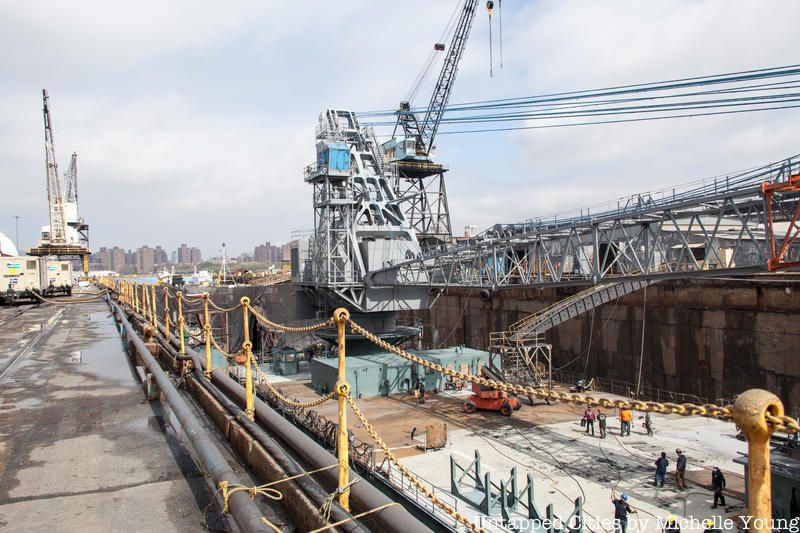
In 1858, the USS Niagara, a navy-yard built ship, sailed from from New York to meet the British HMS Agamemnon in order to lay the first transatlantic undersea telegraph cable. Working together, they each spliced their cable ends and sailed toward their home continent. Following the expedition, Queen Victoria successfully transmitted her first Morse code message to the United States on August 5th.
Next, explore the Abandoned Brooklyn Navy Yard Hospital Annex in NYC and get up close with the Dry Docks of the Brooklyn Navy Yard.
Subscribe to our newsletter